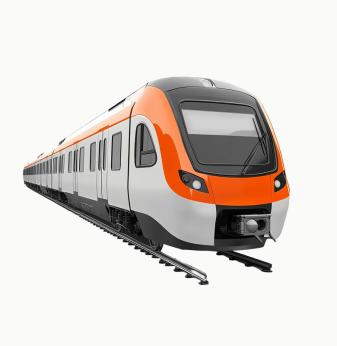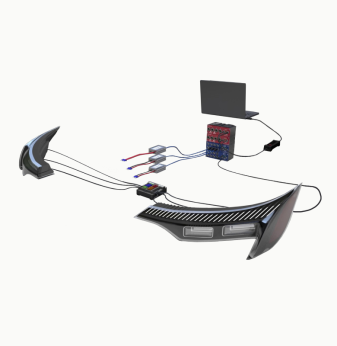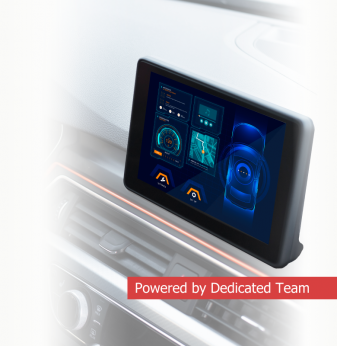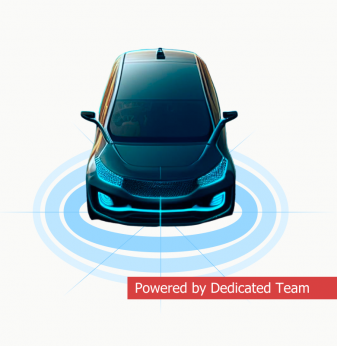Navigation Systems for Autonomous Ships

Autonomous ships, also known as unmanned or self-navigating vessels, represent a transformative leap forward for maritime transportation. These ships promise significant improvements in efficiency, operational costs, and safety. However, navigating complex maritime environments independently requires advanced systems designed with precision and reliability.
In this article, we'll explore the critical technologies behind autonomous ship navigation, highlight industry challenges, and provide real-world project examples.
The Rise of Autonomous Ships
Autonomous ships have become increasingly popular due to advancements in technology and a growing demand for operational efficiency in transportation and logistics. By eliminating human error, these vessels promise safer journeys, optimized operations, and substantial cost savings by reducing the need for onboard crew.
However, achieving complete autonomy requires highly sophisticated navigation systems capable of accurately managing complex maritime environments.
Key Technologies in Autonomous Navigation
Autonomous ship navigation relies on several essential technologies:
Advanced Sensors
Sophisticated radar, LiDAR, sonar, and high-definition cameras help vessels continuously monitor their surroundings. These sensors detect other ships, obstacles, and changing sea conditions, enabling safe navigation.

Satellite Navigation and Communications
Accurate GPS positioning and reliable satellite communication systems ensure precise, uninterrupted positioning and communication between vessels and remote control centers.
Artificial Intelligence and Machine Learning
AI and machine learning algorithms analyze sensor data in real-time, helping autonomous ships make instant decisions about route adjustments, obstacle avoidance, and responding to unpredictable environmental changes.
At Promwad, we specialize in integrating these cutting-edge technologies to develop robust navigation solutions for autonomous maritime vessels .
Essential Technologies for Autonomous Ship Navigation
| Technology | Function |
| Radar and LiDAR | Detecting and measuring distance to obstacles |
| GPS and Satellite Comms | Ensuring accurate positioning and reliable data exchange |
| AI-driven Software | Real-time decision making and adaptability |
| Sensor Networks | Monitoring environmental conditions |
Challenges Facing the Industry
Despite numerous advantages, several challenges need addressing to make autonomous ships viable:
Reliability and Safety
Ensuring reliability across varied maritime conditions is paramount. Navigation systems must reliably handle dynamic oceanic environments without human oversight.
Cybersecurity
Autonomous ships heavily depend on digital communication and systems integration, increasing their vulnerability to cyber threats. Ensuring robust cybersecurity protocols is essential to protect operations and maintain trust.
Regulatory Framework
Currently, international maritime regulations have not fully caught up with autonomous shipping technology. Establishing clear, globally accepted standards remains a significant challenge.
Promwad addresses these challenges by creating secure, reliable, and compliant navigation systems.
Examples of Autonomous Ship Projects
Several notable autonomous shipping projects illustrate the practical potential of these innovations:
- Yara Birkeland (Norway): The world’s first fully autonomous electric cargo ship aimed at reducing emissions by decreasing road transport reliance.
- Rolls-Royce Marine: Developing intelligent navigation technologies to facilitate remote and autonomous vessel operation, enhancing maritime safety and efficiency.
Prominent Autonomous Ship Projects
| Project | Country | Main Features |
| Yara Birkeland | Norway | Fully electric autonomous cargo ship |
| Rolls-Royce Marine | International | Intelligent remote vessel navigation |
Future Directions in Autonomous Ship Navigation
The future of autonomous maritime transport depends significantly on continued advancements in navigation technology. Key areas of future growth include:
- More sophisticated AI systems capable of complex maritime decision-making.
- Next-generation sensor technology offering increased accuracy and reliability in challenging environments.
- Integration of autonomous vessels with broader digital logistics systems, including smart ports.
Importance of Collaboration
Achieving successful autonomous maritime navigation requires collaboration between industry stakeholders, including technology developers, maritime companies, regulators, and academic institutions. Collaboration is critical for addressing technological hurdles and establishing industry-wide standards.
Promwad actively engages with industry leaders and regulatory bodies to develop navigation systems that align with the latest maritime standards and technologies.
Conclusion
Autonomous ships have the potential to reshape maritime transport dramatically. However, realizing this potential depends heavily on the development of robust navigation systems integrating sensors, AI, satellite technology, and secure communication systems.
Promwad remains committed to leading this innovation, providing advanced navigation solutions tailored to the unique needs of autonomous maritime vessels. To find out how our expertise can benefit your maritime projects, visit promwad.com or contact us today.
References:



































